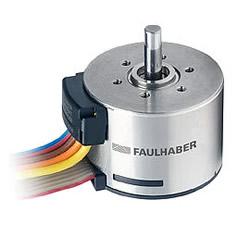Netzer's New DS-58 Absolute Position Rotary Electric Encoder Features 18 bit Resolution
The Non-contact, absolute-position Electric Encoder relies on interaction between the measured displacement and an internally shielded, space/time modulated, electric field and offers features unsurpassed by traditional optical and magnetic encoders.
Netzer's world-wide patented, rugged high performance Electric Encoder technology, suits a wide variety of applications ranging from space and avionics, through military and defense, to instrumentation and automotive. Netzer Rotary Encoders feature absolute or incremental position feedback providing analog or digital outputs.
The Non-contact, absolute-position Electric Encoder relies on interaction between the measured displacement and an internally shielded, space/time modulated, electric field and offers features unsurpassed by traditional optical and magnetic encoders.
The DS-58 is a member of the DS series of Non-contact, absolute-position Electric Encoders, based on Netzer Precision proprietary technology. These encoders offer many advantages, some unparalleled:
* Low profile (17 mm) & low weight
* 18bit resolution
* < 0.02° accuracy
* Analog Sin/Cos, Digital SSi , or Digital AqB+I outputs
* Hollow, floating shaft
* No bearings or other contacting elements
* Low power options
* Analog or multiple digital interface options
* High tolerance to temperature, shock, moisture, EMI, RFI and Magnetic fields
Information on the DS-58 from Netzer Precision can be viewed at the link below-
http://www.electromate.com/products/series.php?&series_id=101696
For more information, please contact:
Featured Product

